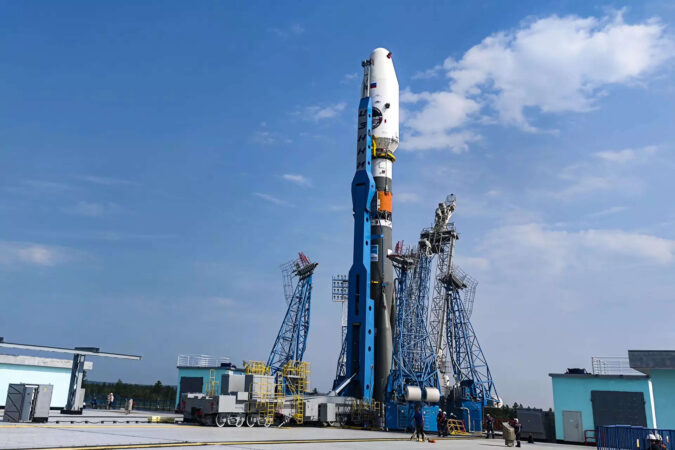The Russian lunar mission, the first since 1976, is racing against India, which launched its Chandrayaan-3 lunar lander last month, and more broadly with the United States and China, both of which have advanced lunar exploration programs targeting the lunar south pole.
A Soyuz 2.1v rocket carrying the Luna-25 craft blasted off from the Vostochny cosmodrome, 3,450 miles (5,550 km) east of Moscow, at 2:11am on Friday Moscow time (1111 GMT on Thursday).
The lander is expected to touch down on the moon on Aug. 21, Russia’s space chief Yuri Borisov told Interfax on Friday. Russian space agency Roscosmos previously pegged Aug. 23 as the landing date.
“Now we will wait for the 21st. I hope that a highly precise soft landing on the moon will happen,” Borisov told workers at the Vostochny cosmodrome after the launch, according to Interfax.
Luna-25, roughly the size of a small car, will aim to operate for a year on the moon’s south pole, where scientists at NASA and other space agencies in recent years have detected traces of water ice in the region’s shadowed craters.
There is much riding on the Luna-25 mission, as the Kremlin says the West’s sanctions over the Ukraine war, many of which have targeted Moscow’s aerospace sector, have failed to cripple the Russian economy.
The moonshot will also test Russia’s growing independence in space after its February 2022 invasion of Ukraine severed nearly all of Moscow’s space ties with the West besides its role on the International Space Station, where the Russian space agency’s cooperation with NASA is seen as crucial to the outpost’s survival.
“Russia’s aspirations towards the moon are mixed up in a lot of different things. I think first and foremost, it’s an expression of national power on the global stage,” Asif Siddiqi, professor of history at Fordham University, told Reuters.
US astronaut Neil Armstrong gained renown in 1969 for being the first person to walk on the moon, but the Soviet Union’s Luna-2 mission was the first spacecraft to reach the moon’s surface in 1959, and the Luna-9 mission in 1966 was the first to make a soft landing there.
Moscow then focused on exploring Mars and since the 1991 fall of the Soviet Union, Russia has not sent probes beyond earth orbit.
The Luna-25 spacecraft was expected to exit Earth’s orbit at 3:30am Moscow time on Friday.
